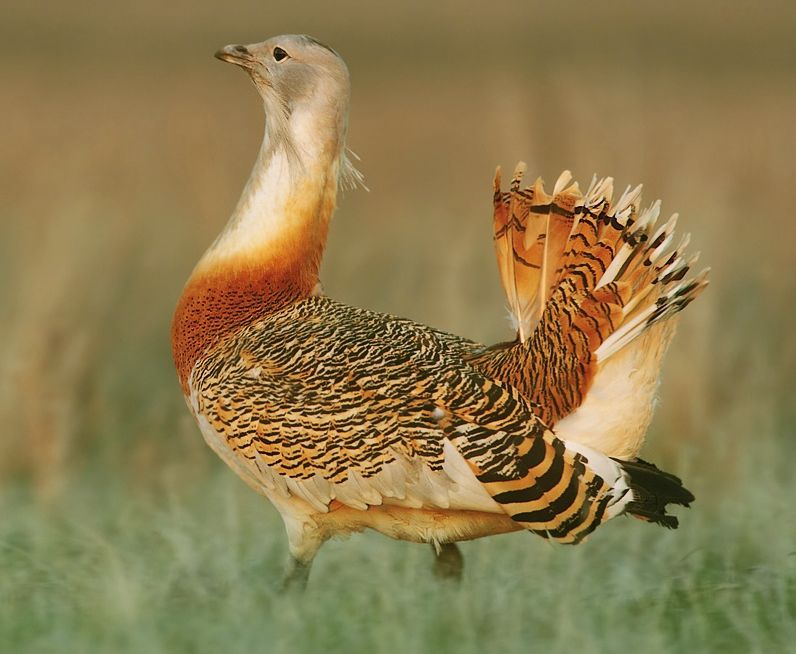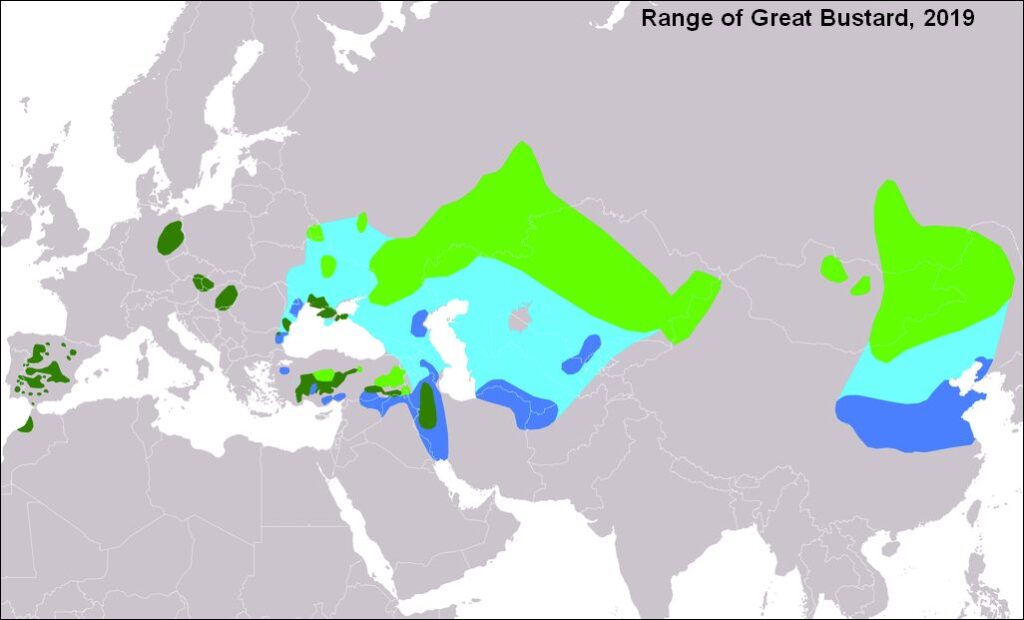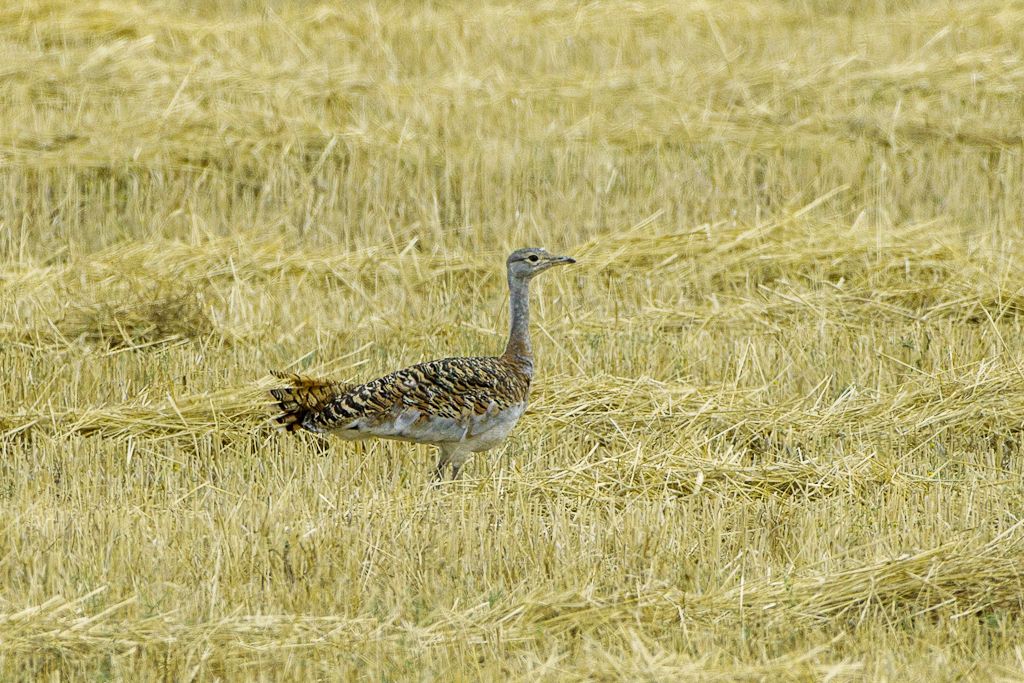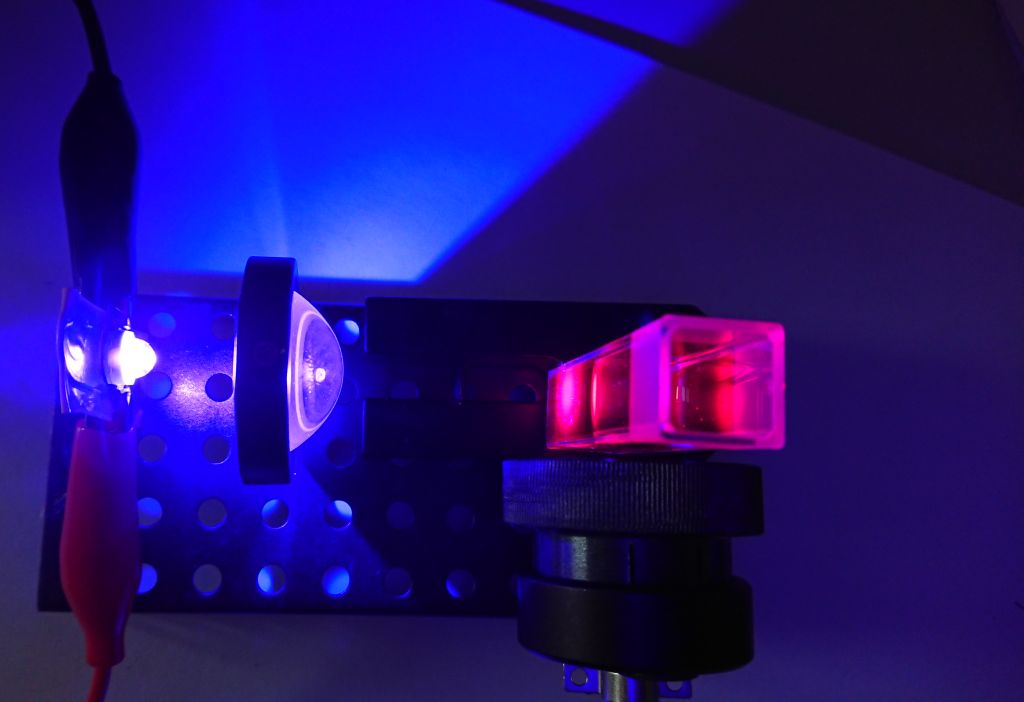
16 September 2024: Day 10, Fuente de Piedra, Osuna, and the plains east of Sevilla, WINGS Spain in Autumn Click here to see (generally) where I am today.
One of the target species during our tour’s final days is a very large bird that lives on the steppes and grasslands of Spain. The great bustard (Otis tarda) is the most sexually dimorphic of all birds in terms of size. The males can weigh as much as 42 pounds, are the second heaviest flying bird on earth(*), and average 2.48 times the weight of females. They also stand 3+ feet tall so if one’s out there in the grass we should be able to see it.
Unfortunately the colorful range map below is a bit misleading. The great bustard (Otis tarda) is Endangered and in low numbers everywhere except Spain. According to Wikipedia, “More than half the global population is found in central Spain with around 30,000 individuals.” Some locations in Europe have as few as 100 to 1,000 birds.

Great bustards are famous for their courtship displays. In March the males gather on a lek to joust and puff their feathers.
Females are attracted by features of the display that we humans cannot hear or see. For instance, bustards make low frequency sounds that carry a long distance in open country. Perhaps she hears him from far away.

Bustards’ ability to see UV light plays a part in their courtship. The males’ reddish/brownish feathers contain a pigment called porphyrin, chemically related to hemoglobin, that shows intense red fluorescence under ultraviolet light, as seen in an experiment below.

When a male great bustard fluffs his throat feathers the females see bright glowing magenta in UV light.
Porphyrin pigment breaks down during exposure to sunlight so this feature is lost in older feathers as male breeding plumage ages. By the time the glow is gone, the males don’t need it. Courtship is over until next year.
(*) p.s. The heaviest bird capable of flight is the Kori bustard.